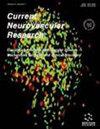缺血性脑卒中患者的白蛋白-球蛋白比率和颈总动脉内膜厚度
IF 1.7
4区 医学
Q3 CLINICAL NEUROLOGY
引用次数: 0
摘要
背景:急性缺血性卒中(AIS)患者血清白蛋白、白蛋白-球蛋白(A/G)比值、球蛋白与动脉粥样硬化之间的关系仍不确定。我们研究了 AIS 患者血清白蛋白、A/G 比值、球蛋白水平与颈动脉粥样硬化之间的关系:缺血性脑卒中患者血清白蛋白、白蛋白-球蛋白(A/G)比值、球蛋白与动脉粥样硬化之间的关系尚不明确。方法:共纳入 1,339 名 AIS 患者。入院时的 A/G 比值分为四等分,血清白蛋白和球蛋白水平也进行了分类。通过评估颈总动脉内膜中层厚度(cIMT)来检测颈动脉粥样硬化,cIMT 平均值和最大值≥1 毫米为异常。我们使用多变量逻辑回归模型评估了 A/G 比值、白蛋白、球蛋白和异常 cIMT 之间的关系:我们旨在评估缺血性脑卒中患者血清白蛋白、A/G 比值、球蛋白水平与颈动脉粥样硬化之间的关系。结果在多变量调整分析中,A/G 比值最高的四分位数(Q4)与最低的四分位数(Q1)相比,平均 cIMT 异常风险降低了 59%(OR 0.41;95% CI 0.29-0.60),最大 cIMT 异常风险降低了 58%(OR 0.42;95% CI 0.30-0.60)。此外,白蛋白水平降低和球蛋白水平升高也与平均 cIMT 和最大 cIMT 异常有关。此外,A/G 比值在已确定的风险因素之外提供了补充预测能力,A/G 比值对异常 cIMT 的 C 统计量大于球蛋白(P <0.01)。结论血清 A/G 比值降低、白蛋白和血清球蛋白升高与 AIS 患者的 cIMT 异常独立相关。此外,A/G 比值似乎能更好地预测 cIMT 异常:在多变量调整分析中,与 Q1 相比,A/G 比值最高的四分位数(Q4)与平均 cIMT 异常风险降低 59% (OR 0.41; 95% CI 0.29-0.60) 和最大 cIMT 异常风险降低 58% (OR 0.42; 95% CI 0.30-0.60) 相关。此外,白蛋白水平降低和球蛋白水平升高与平均 cIMT 和最大 cIMT 异常有关。此外,A/G 比值的预测能力超过了既有的风险因素,且 A/G比值对异常 cIMT 的 C 统计量大于球蛋白(P<0.01):缺血性脑卒中患者血清 A/G 比值降低、白蛋白和血清球蛋白升高与 cIMT 异常独立相关。此外,A/G 比值似乎能更好地预测 cIMT 异常:无本文章由计算机程序翻译,如有差异,请以英文原文为准。
Albumin-Globulin Ratio and Common Carotid Artery Intima-Media Thickness in Patients with Ischemic Stroke
Background: The relationships between serum albumin, albumin-globulin (A/G) ratio, globulin and atherosclerosis in acute ischemic stroke (AIS) remain uncertain. We investigated the associations between serum albumin, A/G ratio, globulin levels and carotid atherosclerosis in patients with AIS. background: The relationships between serum albumin, albumin-globulin (A/G) ratio, globulin and atherosclerosis in the setting of ischemic stroke are unclear. Methods: A total of 1,339 AIS patients were enrolled. Admission A/G ratio was divided into quartiles, and serum albumin and globulin levels were also categorized. Carotid atherosclerosis was detected through the assessment of common carotid artery intima-media thickness (cIMT), and abnormal cIMT was characterized by mean and maximum cIMT values of ≥1 mm. We evaluated the relationships between A/G ratio, albumin, globulin and abnormal cIMT, using multivariable logistic regression models. objective: We aimed to evaluate the associations between serum albumin, A/G ratio, globulin levels and carotid atherosclerosis in patients with ischemic stroke. Results: In the multivariable-adjusted analysis, the highest A/G ratio quartile (Q4) was linked to a 59% decreased risk of abnormal mean cIMT (OR 0.41; 95% CI 0.29-0.60) and a 58% decreased risk of abnormal maximum cIMT (OR 0.42; 95% CI 0.30-0.60) when compared to the lowest quartile (Q1), respectively. Moreover, decreased albumin and elevated globulin levels were also associated with abnormal mean cIMT and maximum cIMT. In addition, the A/G ratio provided supplementary predictive capability beyond the already established risk factors, and the C-statistic of the A/G ratio for abnormal cIMT is larger than globulin (P <0.01). Conclusion: Decreased serum A/G ratio, albumin and elevated serum globulin were independently associated with abnormal cIMT in AIS patients. Moreover, the A/G ratio appeared to be a better predictor of abnormal cIMT. result: In the multivariable-adjusted analysis, the highest A/G ratio quartile (Q4) was associated with a 59% (OR 0.41; 95% CI 0.29-0.60) decreased risk of having abnormal mean cIMT and 58% (OR 0.42; 95% CI 0.30-0.60) decreased risk of having abnormal maximum cIMT in comparison to Q1, respectively. Moreover, decreased albumin and increased globulin levels were associated with abnormal mean cIMT and maximum cIMT. In addition, the A/G ratio provided incremental predictive capacity beyond established risk factors, and the C-statistic of A/G ratio for abnormal cIMT is larger than globulin (P<0.01). conclusion: Decreased serum A/G ratio, albumin and elevated serum globulin were independently associated with abnormal cIMT in patients with ischemic stroke. Moreover, the A/G ratio appeared to be a better predictor of abnormal cIMT. other: No
求助全文
通过发布文献求助,成功后即可免费获取论文全文。
去求助
来源期刊

Current neurovascular research
医学-临床神经学
CiteScore
3.80
自引率
9.50%
发文量
54
审稿时长
3 months
期刊介绍:
Current Neurovascular Research provides a cross platform for the publication of scientifically rigorous research that addresses disease mechanisms of both neuronal and vascular origins in neuroscience. The journal serves as an international forum publishing novel and original work as well as timely neuroscience research articles, full-length/mini reviews in the disciplines of cell developmental disorders, plasticity, and degeneration that bridges the gap between basic science research and clinical discovery. Current Neurovascular Research emphasizes the elucidation of disease mechanisms, both cellular and molecular, which can impact the development of unique therapeutic strategies for neuronal and vascular disorders.
 求助内容:
求助内容: 应助结果提醒方式:
应助结果提醒方式:


